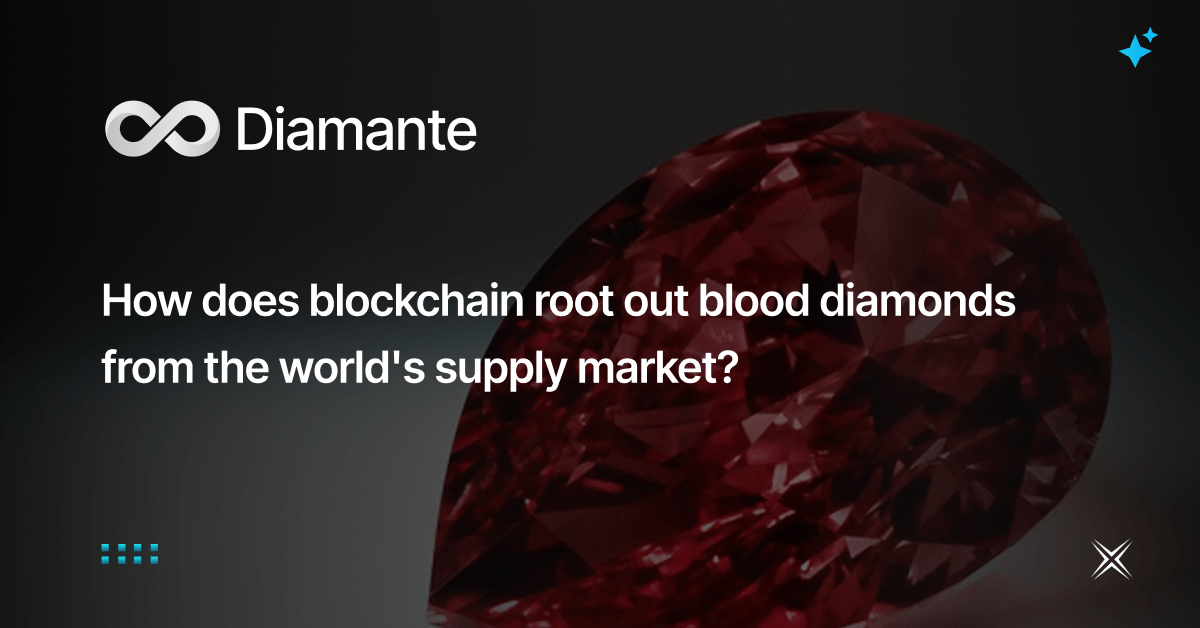
Diamante Roots Out Blood Diamonds from the World’s Supply Market
From provenance to payment, blockchain has become an attractive option for major diamond companies like De Beers that want to track origin and other information vital to their credibility with buyers.
The diamond industry is getting a boost with a distributed ledger treatment, offering crucial advantages for all supply chain parties. For purchasers of diamonds, transactions can be soured by numerous perils such as origin, quality and fakes. The concept of using blockchain in the industry is nothing new, but has arguably risen to prominence in response to the issue of blood diamonds, also known as conflict diamonds.
These are a major problem for the market due to highly publicized controversies, including a connection to everything from war to child labor. The gems are mined in war zones and sold to fund a range of activities, be it an insurgency or a warlord’s reign. The Kimberley Process Certification Scheme (KPCS) was set up to handle the task of eliminating blood diamonds from the market. Under a United Nations mandate, 54 countries, including the European Union acting as one nation, are committed to removing conflict diamonds from the global supply chain.
These are defined as “rough diamonds used to finance wars against governments around the world”. The core of the initiative is the KPCS, under which states implement safeguards on shipments of rough diamonds and certify them as “conflict-free”.
But it is evident that many concerns remain for producers, sellers and buyers. Hence, blockchain has become an attractive option for major companies that can use distributed ledger to track origin and other information vital to their credibility with buyers. Taking the lead are the likes of De Beers, which in 2018 launched a blockchain platform called Tracr, aiming to establish provenance, authenticity and traceability across the diamond supply chain. Its major partners include Signet Jewelers, which claims to be the world’s largest retailer of diamond jewellery and the largest speciality retail jeweller in the US, UK and Canada, along with Chow Tai Fook Jewellery Group and Alrosa, a world leader in diamond mining.
The association with Chow Tai Fook ensures the initiative will be further disseminated in the Greater China market, while Alrosa’s participation means the world’s two largest diamond producers are involved, the other being De Beers. Tracr is not the only traceability platform in the market, however. Tech company Everledger has unveiled its own solution – and reportedly has encrypted the provenance of more than two million diamonds in three years as part of its operations tracking high-value assets on a global digital ledger. The company’s Diamond Time-Lapse Protocol, created in 2017, offers a historical ledger of diamonds, with real-time data covering the likes of origin, cutting and polishing, master artisans’ work and certification.
Gemstone mining and marketing company Fura Gems is another company adopting the same approach to the coloured gemstone industry. Aside from trying to eliminate blood diamonds from the supply chain, a key element in using blockchain is verifying the many transactions involving diamonds. One of the biggest headaches is payments. This is one of the industry challenges the blockchain business aims to resolve, thus improving speed, transparency and fee reductions. Tech company Diamante provides a B2B payments network for cross-border diamond transactions that seeks to address cost challenges and reduce charges between chain participants.
Peer-to-peer technology via blockchain speeds up payments with smart contracts and also ensures trades are secure and traceable, having been recorded via digital ledger technology (DLT) and protected by encryption. Genesis Block co-founder Sam Proctor is acting chief regulatory adviser for Diamante, which aims to promote user privacy while making transactions easy to track.
“We are working with Diamante and we aim to address pain areas in the industry, which include assurance, trust and transparency,” Proctor says. But the question remains: how does using blockchain add value to the diamond supply chain when it comes to transactions only?
“The true advantage is the instantaneous sharing of information via DLT. Multiple parties can see an overview of data transfer, which is in this case the wiring of money with speed, transparency and lower costs,” says Proctor.
Chirag Jetani, Diamante’s chief operating officer, has long-term diamond industry experience and believes they are tackling unique challenges head-on.
“The goods we are dealing with are of high value, so DLT works in tandem with the current banking system to allow parties in different geographies to work together and settle payments instantly and offer customers piece of mind,” he says. At the centre of the offering are cost factors. “The response and interest people are showing has been really positive,” Jetani adds.
Source : SCMP





